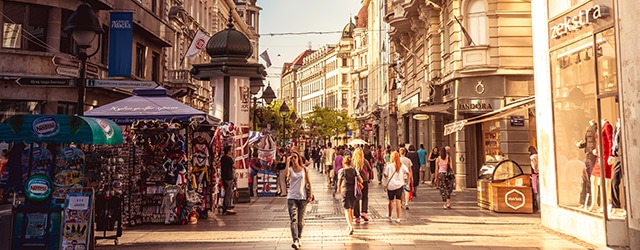Foreign investors committed funds to 77 greenfield projects in Serbia last year, up from 57 in 2015.

Although the West Balkans are not part of the European Union, these countries enjoy access to EU markets and are becoming more attractive to international investors, according to a 2016 global performance index for greenfield foreign direct investment (FDI) released by fDi Intelligence, an FT data division.
The index measures the attractivness of countries as destinations for greenfield FDI relative to the size of their GDP. Serbia took pole position displacing Vietnam, index leader for the two previous years. Macedonia rose to third place. The only other European country in the top 10 was Lithuania.
“The West Balkan region has seen an upturn in the last couple of years, with growth rates now around 3% on average,” observes Peter Sanfey, deputy director for country economics and policy at the European Bank for Reconstruction and Development (EBRD).
In May, the EBRD forecast that Serbia’s GDP would grow by 2.9% this year and Macedonia’s by 2.4%, with both economies accelerating to GDP growth of 3% next year.
Foreign investors committed funds to 77 greenfield projects in Serbia last year, up from 57 in 2015. More than half of those projects were in manufacturing sectors like automotive and electronic components, with international companies choosing Serbia more as a “value-chain destination,” or a platform for exporting, rather than for the attractions of its domestic market.
Serbia emerged from a deep recession in 2016, so the methodology derived from Unctad—the United Nation’s trade and development body—of comparing the amount of greenfield FDI with a country’s overall GDP may have had a flattering effect in this case. As Sanfey points out: “The scale of today’s FDI isn’t huge, especially when compared to the wave of privatizations before the financial crisis.”
One of the main attractions of greenfield FDI is low factory labor costs, which are now roughly half those in nearby Hungary or Turkey.
But the key to most FDI decisions is the ability to export to European markets. “With the EU as its main market, having tariff-free access is crucial,” says Sanfey.
The EBRD is also helping promote regional integration and closer political cooperation through its biennial Western Balkan Investment Summit initiative. “The region is becoming of interest to global investment,” says Sanfey. “China is active in infrastructure, Turkey is increasingly important and the Gulf countries are also investing, especially in Serbia.”



